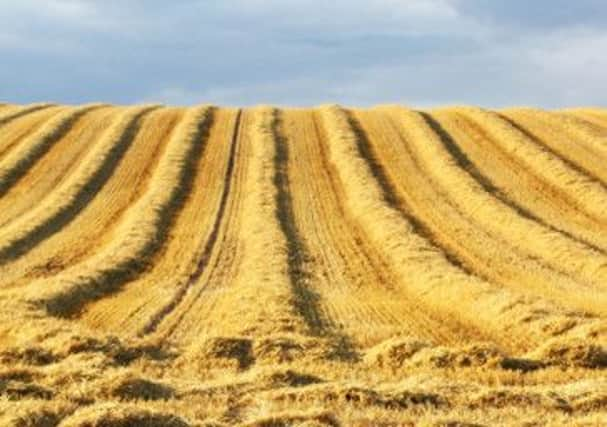Comment: Rob Hicks


The sight of these massive bits of kit marching relentlessly across the golden landscape is for many the highlight of the farming year and luckily this year the dry weather has made for excellent harvesting conditions.
What is especially gratifying is that this is the second year in succession that harvest has coincided with a warm dry spell – really helping the region’s farmers get their fields back in good order after the dreadful flooding of 2012.
Advertisement
Hide AdAdvertisement
Hide AdHarvest time always brings a flood of enquiries from the media about how farmers are faring and inevitably those questions lead on to how consumers and food prices will be affected, depending on what the weather is doing in any given year.
One thing is for sure, whenever you get to talking about the economics of farming things get both technical and complicated – sometimes mind-numbingly so! The cereals market is no different, especially as it’s not just what happens here in the UK that counts – but what happens elsewhere around the world.
In global terms the UK is a relatively small cereals producer compared to the likes of the US and Eastern Europe, so a weather-affected harvest there can have a much more significant impact on world wheat prices than something localised to the UK.
As a result, local farmers have their work cut out navigating a safe passage through what can be very turbulent waters, with farmgate prices changing dramatically not just year to year but week to week. This year the headline price of feed wheat is around £125 a tonne; half what it was 18 months ago.
Advertisement
Hide AdAdvertisement
Hide AdGiven that the average cost of growing the crop this year is more than £100 a tonne, it’s easy to see how important it is to minimise the risk that such price volatility brings. Different strategies can be employed, but the vast majority of farmers will ‘forward sell’ a proportion of their crop ahead of harvest, agreeing to supply a specified tonnage at an agreed price. This price is then guaranteed and while it may fall short - sometimes well short - of a high headline price at harvest, it will protect the grower if conversely prices fall through the floor.
While this practice is commonplace, it too is not without its risks as we saw in 2012, when the crops produced very low yields. In this situation farmers can find that they don’t have enough to fulfil their contract. Their only option is to buy more; paying the full market price for it, and then sell it as promised at the lower rate.
It is also worth pointing out that when looking at the price of a loaf, the cost of the raw materials; i.e. wheat, accounts for just 10 per cent of the overall cost. The costs of milling, baking, packaging, transporting and retailing make up the remainder, so even if wheat prices hit an all-time high, that should have a minimal impact on the price of a loaf, especially when you think most merchants will have deals in place to source the wheat for far less.
So next time you’re out and about watching harvesters in action, spare a thought for the challenges of producing and selling a crop that for most of us is something we enjoy every day of our lives.